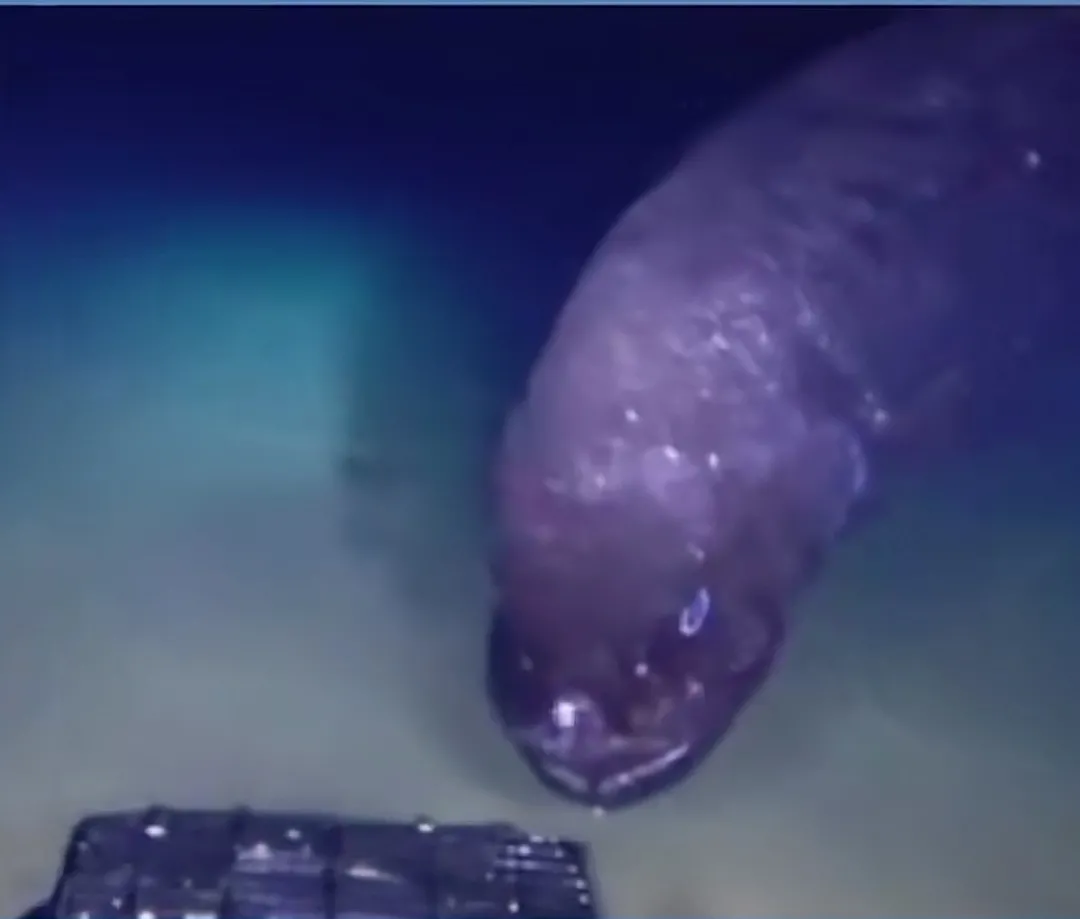On July 3, the Japan Marine Research and Development Agency announced that a giant deep-sea fish had been photographed at a depth of more than 2,000 meters. The total length of this fish is estimated to be about 2.53 meters, and it was later named "transverse sardines".

According to information released by Japan about the transverse sardine, this deep-sea fish has a dark blue-purple body and no scales on its head, it looks like catfish, with a thick head and a large mouth, which is a hunting fish. The "transverse sardine" opens widely, indicating that the fish is about to attack.
However, this is not the first time the species has been discovered, it originally appeared in Suruga Bay outside Shizuoka Prefecture, and the species-related registration will be completed in 2021. To date, only 6 new species have been captured or photographed.
The "transverse sardine" species is found in the deep sea outside Hachijojima Island after Suruga Bay, and according to the location analysis of the large deep-sea fish found by the team, it may therefore live widely in the extremely deep waters of the North Pacific.
Why is it named "transverse sardines"?
Sardines are a general term for some herring, flat on the sides and silvery-white. Adult sardines are about 26 cm long. It is found in the northwest pacific ocean around Japan and offshore the Korean Peninsula. Docosahexaenoic acid (DHA) is rich in sardines. Why is the 2.53 m long "transverse sardine" classified as a sardine?
"Transverse sardines" are larger, the common body length is about 1.3 meters, this is the first time to find the largest body size in this species, because the appearance is too strange, therefore, after the discovery of it this time, many people's first reaction, will feel that this is a "mutant animal".
Sardines are offshore warm water fish that are usually not found in the high seas and oceans. They swim fast and usually inhabit the upper middle and upper waters, but in autumn and winter, when the local surface water temperature is low, they inhabit deeper waters.
Because the "transverse sardine" and the sardine have two very large characteristics, which live in the deep sea and are rare in populations, they are identified as a class of sardines.
Is the 2.53-meter giant deep-sea fish related to japan's nuclear wastewater discharge?
In the deep sea of our planet, most of the place is an area that has not been reached by humans, and there are a large number of unknown ancient species living in this location, some of which are huge, some of which are transparent, some of which are super long, and some of which are even very flat. But it is rare to find such a large sardine in the deep sea, and many netizens believe that whether the giant fish is related to Japan's nuclear wastewater discharge?
Under normal circumstances, nuclear wastewater has a certain impact on the earth's organisms, because it contains a large number of radioactive elements, posing a serious threat to the genes of organisms, which may cause large-scale deaths due to strange diseases in the population.
Is the increase in size related to nuclear wastewater? Usually, there is genetic recombination of species by nuclear radiation, but this recombination is good and bad, but most of it ends in failure.
For example, when studying seeds, scientists usually launch seeds into space, screen the seeds when the spacecraft returns to Earth, leave high-quality seeds behind, and reorganize similar changes several times to finally obtain seeds that meet the goal.
However, due to the radiation effects of nuclear power plants in Japan, some species affected by nuclear radiation have appeared near Fukushima, Japan, such as wild boars with violent deformities, which have also bred new species, and nuclear radiation has changed their appearance and made them look terrible, and has also made their temperament very aggressive.
According to the number and size of the giant deep-sea fish found in Japan, this species is larger and there is no major difference between the population and the population, and it is likely that it is a species living in the deep sea, but there is also a small probability that the species variation caused by the discharge of nuclear wastewater in Japan has a huge phenomenon.
In short, the discovery of giant deep-sea fish in Japan is good news for human beings, which can make us clearly realize that there are more novel species hidden in the depths of the ocean, and through the study of species, we can clearly understand the evolution of the earth and understand the whole process of the development of the earth.